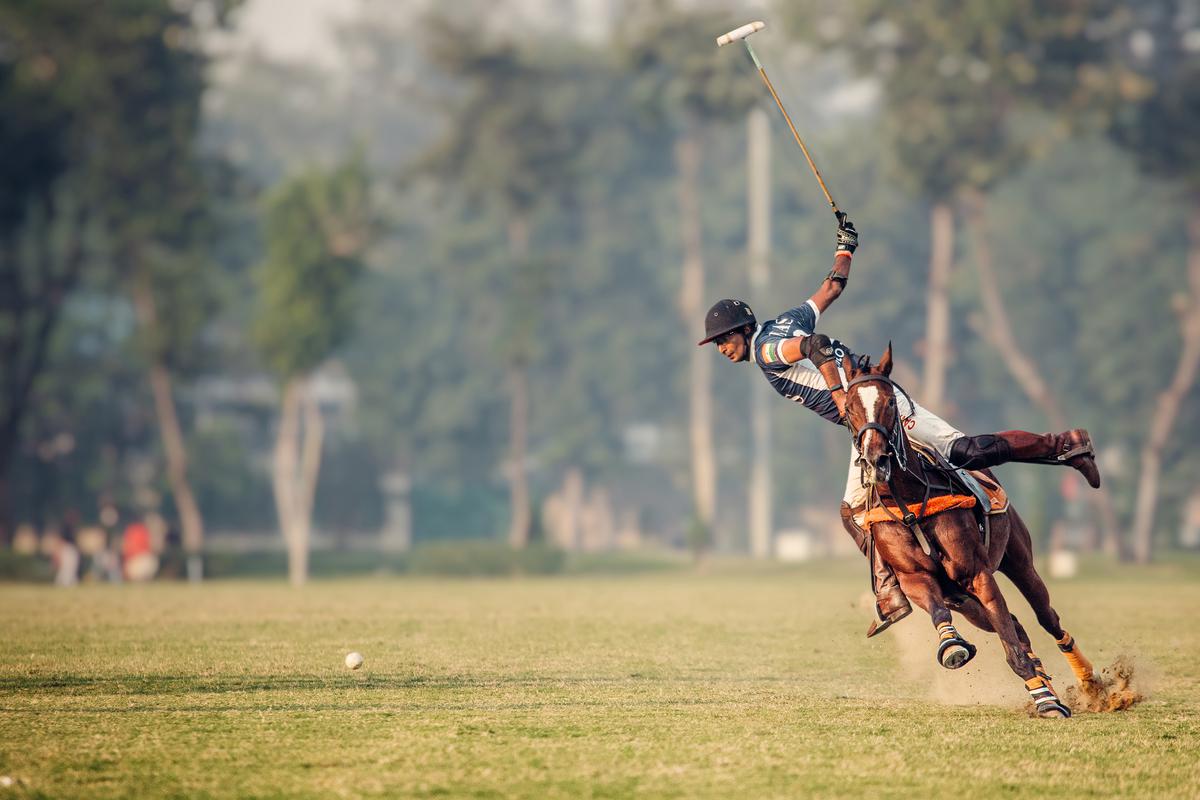
Polo in India: How the sport is drawing new spectators
The Hindu
With corporate sponsors and a growing number of riding clubs in the country, polo is no longer a sport pursued only by royals and cavalry officers. Despite its costly tag, an increasing number of riders are keen to swing the mallet
In Shandur, Pakistan, home to the world’s highest polo field in the shadow of the snow-dusted Karakoram mountains is a plaque that reads “Let other people play at other things, the king of games is still the game of kings”.
The words found an echo on a dark afternoon in Jaipur’s Rajasthan Polo Club (RPC) grounds recently when, despite slanting drops of rain slamming the sodden earth, players wielded mallets like sabres as they cannoned the ball towards the goals, drawing cheers from those in the stands.
The Leela Palaces, Hotels and Resorts had partnered with RPC for its inaugural sponsorship of The Leela Maharaja Sawai Man Singh Polo Cup 2022. The Leela Polo Team was captained by Sawai Padmanabh Singh, the titular maharaja of Jaipur, while Chandna Carysil had among its players, Ashok Chandna, Rajasthan’s Minister for Youth Affairs and Sports. The match, a magnificent display of man and beast, ended in a 2-2 draw.
Padmanabh Singh, 24, who led the Indian polo team at the World Cup play-offs in South Africa in September, says, “Despite the precarious conditions on the ground we are glad to have played.” Fondly called Pacho by those closest to him, he started playing polo at 12. “At Dussehra, we do aswa pujan following a tradition of worshipping the horse,” says Padmanabh, who played his first international tournament in the Black Forest, Germany, swinging a made-in-Argentina mallet. “Although my great-grandfather Sawai Man Singh, my grandfather and my father played the sport, it was only at Mayo College that I discovered it for myself.”
Mayo College, in Ajmer, has been a nurturing ground for polo players, especially from princely families, who have been patrons of the sport in pre-Independence years. Indian royals found in polo, both heroism and horsemanship, qualities they revered and soon the sunburnt plains of North India echoed to the sound of hoofbeats, the whack of mallet on ball and a refined culture that grew around the game.
Legend has it that polo originated in Central Asia when Genghis Khan played with the decapitated heads of his opponents. The former Olympic sport was revived in the 19th Century when a British subaltern learnt the game in Manipur and popularised it among tea planters in Assam and cavalry units in the Army. When it travelled outside the subcontinent via the Raj – nearly 100 countries play polo today – it became the royalty-patronised, champagne-drinking, divot-stamping, fashion-conscious sport that it is today.
In post-1947 India upto the early Noughties, it has been the Army that has largely held the sceptre for polo. Colonel Ravi Rathore, ex-commandant of 61st Cavalry (raised in 1953 as the last, operational unmechanised horse-mounted cavalry unit in the world to serve as a bridge between cavalry units of the past and armoured units of the present at Pt Nehru’s insistence) and an Arjuna awardee, is the only Indian to have played in five consecutive world cups from 2003 to 2017.

The crowning achievement of American inventor William Painter’s career was, well, inventing the now-ubiquitous crown bottle cap. Oh, and not to forget, the bottle cap lifter to open these crowns, or what we simply call the bottle openers. A.S.Ganesh tells you how Painter changed the bottling industry forever…










